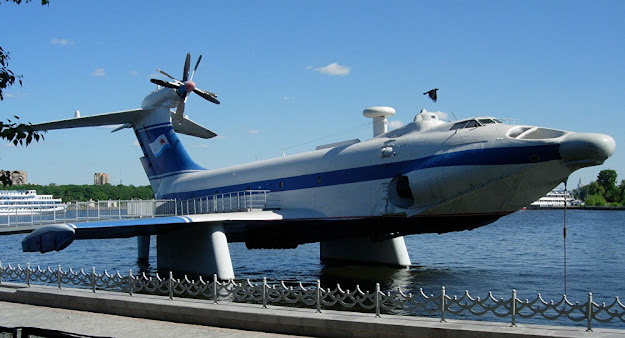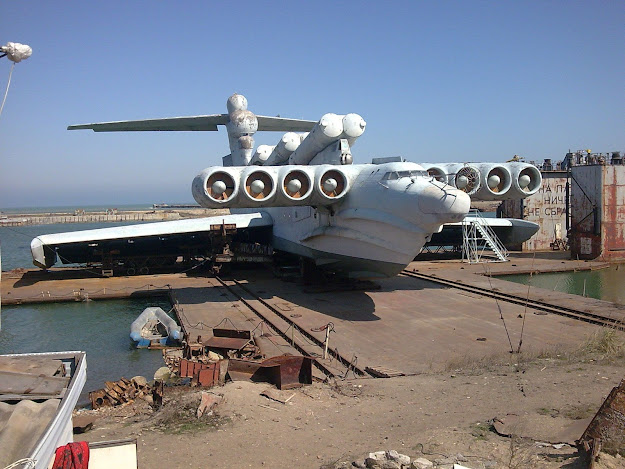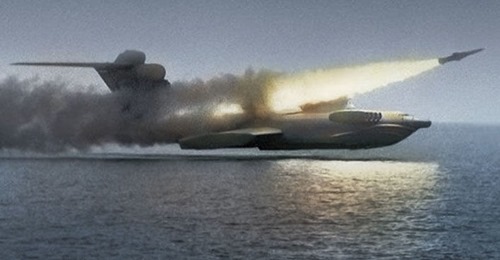L' AEG SUT 264 è un siluro pesante tedesco da 21 pollici prodotto da Atlas Elektronik ed entrato in servizio nel 1967.
Atlas Elektronik è un'azienda di sistemi e elettronica navale / marina con sede a Brema, in Germania. È coinvolta anche nello sviluppo di sistemi sonar integrati per sottomarini e siluri pesanti.
La società è stata una filiale di BAE Systems fino al dicembre 2005, quando è stata venduta a ThyssenKrupp ed EADS.
Atlas Elektronik è diventata una consociata interamente controllata di ThyssenKrupp Marine Systems nel 2017.
L'azienda è stata fondata nel 1902 come Norddeutsche Maschinen- und Armaturenfabrik GmbH, concentrandosi sui servizi di costruzione e ingegneria navale. Il suo nome fu cambiato nel 1911 in Atlas Werke AG, l'origine del suo nome moderno.
Durante la prima guerra mondiale, Atlas Werke ha costruito U-boot per la Marina Militare Imperiale tedesca.
Nel dopoguerra l'azienda ridusse le dimensioni ed iniziò a concentrarsi sulla tecnologia civile, a causa delle restrizioni imposte dal Trattato di Versailles.
Dopo la presa del potere da parte dei nazisti, la compagnia crebbe fino a diventare un fornitore di armi per la Kriegsmarine. Atlas produceva siluri, dragamine e macchine Enigma, tra le altre cose.
Dopo la fine della seconda guerra mondiale, Atlas venne ricostruita. La divisione cantieristica navale ed altre aree attività furono vendute, concentrando l'attenzione esclusivamente sull'elettronica navale per la difesa.
A partire dagli anni '60, la società cambiò proprietà più volte, inclusi diversi anni trascorsi come filiale di Friedrich Krupp AG (dopo il 1965) e Bremer Vulkan (1991). Nel 1992, Atlas si fuse con la STN Systemtechnik Nord, un grande fornitore di elettronica per la difesa, in STN Atlas Elektronik GmbH. Cinque anni dopo, nel 1997, STN Atlas venne rilevata dalla Rheinmetall (51%) e dalla BAE Systems (49%).
Nel 2003 STN Altas è stata scissa: Rheinmetall acquisì il business dei sistemi terrestri (Rheinmetall Defense Electronics) e BAE prese il controllo del business navale, mantenendo il nome Atlas Elektronik.
BAE Systems annunciò che intendeva vendere la società nel 2005. I principali offerenti erano ThyssenKrupp / EADS, Thales Group e L-3 Communications. Il 30 dicembre l'offerta congiunta ThyssenKrupp / EADS, del valore di 145 milioni di euro (100 milioni di sterline), fu nominata vincitrice con le società che detengono rispettivamente il 51% e il 49%.
L'offerta venne complicata dalla richiesta del governo tedesco di approvare qualsiasi vendita come accettabile. Il Financial Times descrisse la vendita come a "prezzo ridotto" perché la società francese Thales aveva offerto 300 milioni di euro, ma venne bloccata dall’acquistare la società Atlas per motivi di sicurezza nazionale.
Airbus Defence and Space ha annunciato la vendita delle restanti quote di Atlas Elektronik a ThyssenKrupp il 12 gennaio 2017. La fusione di ThyssenKrupp Marine Systems e Atlas Elektronik è stata completata il 3 aprile 2017.
Prodotti:
- Sistemi sottomarini
- Sistemi combattenti di superficie
- Sistemi di guerra mineraria, ad esempio SeaFox ROV per lo smaltimento delle mine
- Sistemi di guerra antisommergibile
- Sistemi di sicurezza marittima
- Veicoli senza pilota
- Armi navali, ad es. Atlas Elektronik SUT e DM2A4 (SeaHake mod 4) siluri pesanti
- Sistemi di comunicazione marittima
- Servizio Clienti.
Descrizione
SUT sta per Surface and Underwater Target. È un'arma a doppio scopo che può essere lanciata da navi di superficie, sottomarini e posizioni costiere.
AEG SUT mod 1
L'AEG SUT 264 è un siluro pesante tedesco da 21 pollici prodotto da Atlas Elektronik entrato in servizio nel 1967.
Si tratta di un siluro homing attivo / passivo con guida a filo. Il siluro AEG-SUT Mod-1 ha una portata di circa 30 chilometri alla velocità di circa 35 nodi. Il siluro trasporta una testata HE da 250 kt (551 libbre). La velocità massima del siluro è di 35 nodi e la sua portata è di 28 km (17,4 miglia) a 23 nodi e 12 km (7,5 miglia) a 35 nodi.
Nel 2013 l'OEM Atlas Elektronik ha ricevuto un contratto per aggiornare i 64 SUT rimasti in servizio nella Marina indiana. Il programma di aggiornamento prolungherà essenzialmente la vita dei siluri di almeno 15-17 anni.
Mod 2
Il SUT Mod 2 è stato paragonato favorevolmente ai cinesi Yu-4 e Yu-6.
Produzione
Una linea di produzione è stata creata in Indonesia con la collaborazione della Marina Indonesiana e dei società dell'Aerospazio indonesiano per produrre il SUT su licenza. Taiwan ha ricevuto 200 siluri da questa linea di produzione nel 1998.
Cronologia del servizio
Cile
Nel 2004 il sommergibile cileno di classe Scorpène O'Higgins ha lanciato un SUT in profondità durante i test di accettazione al largo di Lorient, in Francia.
India
Nel 2013 l'OEM Atlas Elektronik ha ricevuto un contratto per aggiornare i 64 SUT rimasti in servizio nella marina indiana.
Il SUT è stato il primo siluro lanciato da un sottomarina classe Kalvari a causa della mancanza di approvvigionamento di siluri pesanti pianificati. Un acquisto pianificato di siluri Black Shark è fallito perché il loro produttore Finmeccanica venne inserito in una lista nera dal governo indiano.
Taiwan
Il SUT è stato originariamente acquistato insieme a due sottomarini di classe Hai Lung. Il 4 settembre 2003 un siluro SUT lanciato da un sottomarino durante lanci di addestramento ruppe i suoi cavi di controllo ed andò fuori controllo. Il siluro venne recuperato quattro ore dopo da una spiaggia della contea di Yilan. Rappresentanti del produttore si recarono a Taiwan per partecipare alle indagini sull'incidente. L'8 ottobre la Marina testò un secondo siluro con risultati soddisfacenti. Il 14 ottobre la Marina tenne un test completo nella contea di Pingtung: il primo siluro ebbe problemi simili a quello del 4 settembre, ma il problema venne risolto e un secondo siluro distrusse con successo il bersaglio, un cacciatorpediniere classe Yang dismesso.
Nel 2010 la Marina taiwanese offrì una ricompensa ai pescatori locali per il recupero di un SUT di addestramento perso durante un'esercitazione. Il SUT sarà sostituito dal siluro Mk 48 nella Marina Militare taiwanese.
Utenti:
- Marina cilena
- Marina colombiana
- Marina ecuadoriana
- Marina egiziana
- Marina ellenica
- Marina indiana
- Marina indonesiana
- Marina sudcoreana
- Marina sudafricana
- Marina della Repubblica di Cina
- Marina peruviana.
ENGLISH
The AEG SUT 264 is a 21-inch German heavy torpedo manufactured by Atlas Elektronik and entered service in 1967.
Atlas Elektronik is a marine / marine electronics and systems company based in Bremen, Germany. It is also involved in the development of integrated sonar systems for submarines and heavy torpedoes.
The company was a subsidiary of BAE Systems until December 2005, when it was sold to ThyssenKrupp and EADS.
Atlas Elektronik became a wholly owned subsidiary of ThyssenKrupp Marine Systems in 2017.
The company was founded in 1902 as Norddeutsche Maschinen- und Armaturenfabrik GmbH, focusing on shipbuilding and ship engineering services. Its name was changed in 1911 to Atlas Werke AG, the origin of its modern name.
During the First World War, Atlas Werke built U-boats for the German Imperial Navy.
After the war the company reduced its size and began to focus on civil technology, due to the restrictions imposed by the Treaty of Versailles.
After the seizure of power by the Nazis, the company grew to become a weapons supplier for Kriegsmarine. Atlas produced torpedoes, minesweepers and Enigma machines, among other things.
After the end of the Second World War, Atlas was rebuilt. The shipbuilding division and other business areas were sold, focusing exclusively on naval electronics for defence.
Starting in the 1960s, the company changed ownership several times, including several years spent as a subsidiary of Friedrich Krupp AG (after 1965) and Bremer Vulkan (1991). In 1992, Atlas merged with STN Systemtechnik Nord, a major defence electronics supplier, into STN Atlas Elektronik GmbH. Five years later, in 1997, STN Atlas was taken over by Rheinmetall (51%) and BAE Systems (49%).
In 2003 STN Altas was split up: Rheinmetall took over the ground systems business (Rheinmetall Defense Electronics) and BAE took control of the naval business, keeping the name Atlas Elektronik.
BAE Systems announced that it intended to sell the company in 2005. The main suppliers were ThyssenKrupp / EADS, Thales Group and L-3 Communications. On 30 December the ThyssenKrupp / EADS joint offer, worth 145 million euros (£100 million), was named the winner with the companies holding 51% and 49% respectively.
The offer was complicated by the German government's request to approve any sale as acceptable. The Financial Times described the sale as a "reduced price" because the French company Thales had offered €300 million, but was blocked from buying Atlas for national security reasons.
Airbus Defence and Space announced the sale of the remaining shares in Atlas Elektronik to ThyssenKrupp on 12 January 2017. The merger of ThyssenKrupp Marine Systems and Atlas Elektronik was completed on 3 April 2017.
Products:
- Submarine systems
- Surface combat systems
- Mine warfare systems, e.g. SeaFox ROV for mine disposal
- Anti-submarine warfare systems
- Maritime safety systems
- Unmanned vehicles
- Naval weapons, e.g. Atlas Elektronik SUT and DM2A4 (SeaHake mod 4) heavy torpedoes
- Maritime communication systems
- Customer Service.
Description
SUT stands for Surface and Underwater Target. It is a dual purpose weapon that can be launched from surface ships, submarines and coastal positions.
AEG SUT mod 1
The AEG SUT 264 is a 21-inch German heavy torpedo produced by Atlas Elektronik which entered service in 1967.
It is an active / passive homing torpedo with wire guidance. The AEG-SUT Mod-1 torpedo has a range of about 30 kilometres at a speed of about 35 knots. The torpedo carries a 250 kt (551 lbs) HE head. The maximum speed of the torpedo is 35 knots and its range is 28 km (17.4 miles) at 23 knots and 12 km (7.5 miles) at 35 knots.
In 2013 Atlas Elektronik OEM received a contract to upgrade the 64 SUTs remaining in service in the Indian Navy. The upgrade programme will essentially extend the life of the torpedoes by at least 15-17 years.
Mod 2
The SUT Mod 2 was compared favourably to the Chinese Yu-4 and Yu-6.
Production
A production line has been created in Indonesia with the collaboration of the Indonesian Navy and the Indonesian Aerospace companies to produce the SUT under license. Taiwan received 200 torpedoes from this production line in 1998.
Service history
Chile
In 2004, the Chilean submarine class Scorpène O'Higgins launched a deep-sea SUT during acceptance tests off the coast of Lorient, France.
India
In 2013 Atlas Elektronik OEM received a contract to upgrade the 64 SUTs remaining in service in the Indian Navy.
The SUT was the first torpedo launched from a Kalvari-class submarine due to a lack of supply of planned heavy torpedoes. A planned purchase of Black Shark torpedoes failed because their manufacturer Finmeccanica was blacklisted by the Indian government.
Taiwan
The SUT was originally purchased together with two Hai Lung class submarines. On 4 September 2003 an SUT torpedo launched from a submarine during training launches broke its control cables and went out of control. The torpedo was recovered four hours later from a beach in Yilan County. Representatives of the manufacturer travelled to Taiwan to participate in the accident investigation. On 8 October, the Navy tested a second torpedo with satisfactory results. On October 14, the Navy held a full test in Pingtung County: the first torpedo had similar problems as on September 4, but the problem was solved and a second torpedo successfully destroyed the target, a decommissioned Yang class destroyer.
In 2010, the Taiwanese Navy offered a reward to local fishermen for the recovery of a training SUT lost during an exercise. The SUT will be replaced by the Mk 48 torpedo in the Taiwanese Navy.
Users:
- Chilean Navy
- Colombian Navy
- Ecuadorian Navy
- Egyptian Navy
- Hellenic Navy
- Indian Navy
- Indonesian Navy
- South Korean Navy
- South African Navy
- Marina of the Republic of China
- Peruvian Navy.
(Web, Google, Wikipedia, You Tube)























































